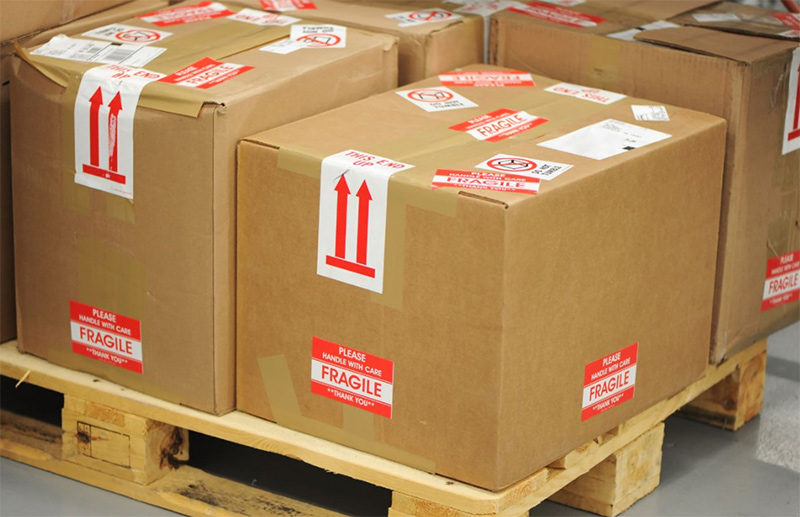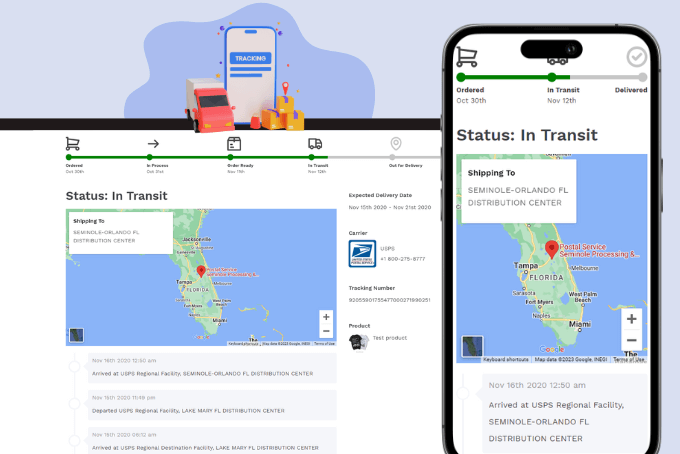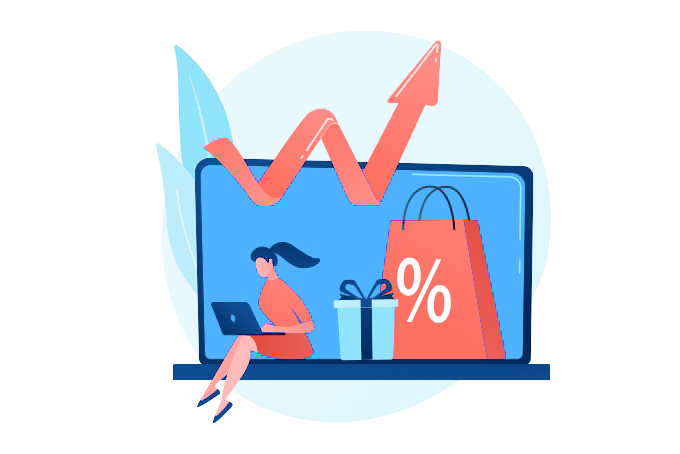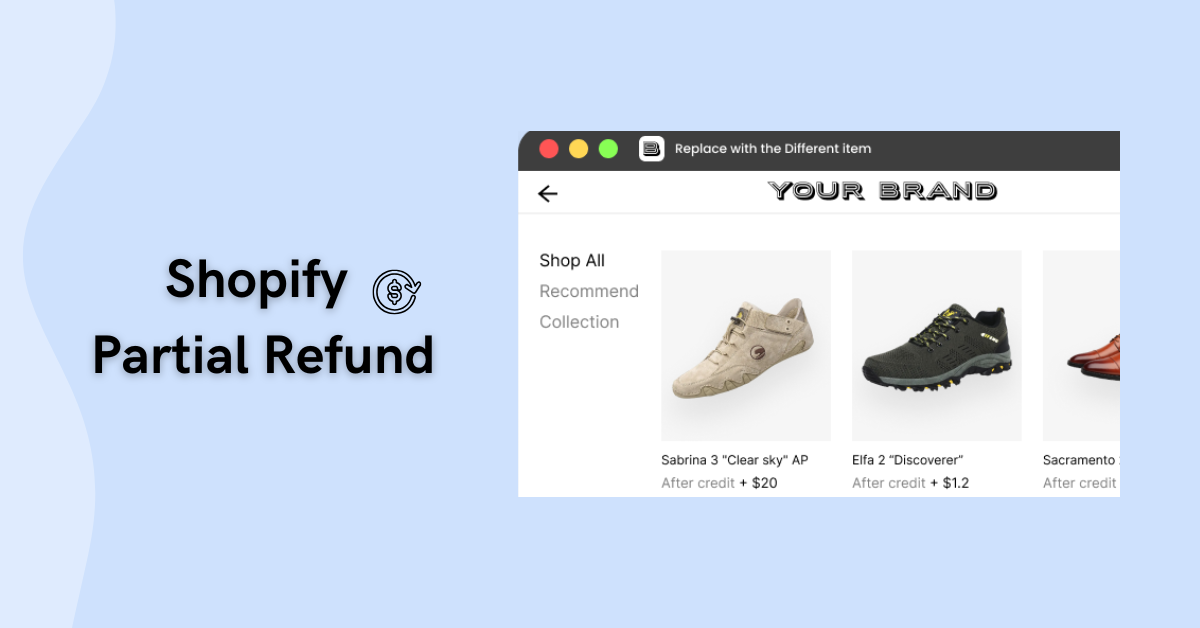
As an Ecommerce store owner, the last thing you want is high ecommerce returns rates chipping away at your profit margins. Over 16.5% of online sales registered in the U.S. are returned goods, according to Statista. This means that out of the $1.3 trillion generated in online sales in 2022, store owners incurred a cost of $817 billion due to returns, and a quarter of that came from online stores. Therefore, eCommerce returns management skills are essential for every ecommerce store owner. These management skills are especially truly in need now due to the rise of consumer bracketing.
Bracketing and ‘wardrobing’ habits impact online fashion and electronics stores the most. As a result, some online retailers utilize anti-wardrobing tags, thoroughly inspect items, and set up reverse logistics stations to combat this problem. With these ecommerce returns solutions, retailers clamp down on returns.
Other merchants deal with returns by employing effective ecommerce returns software like the ParcelPanel Return & Exchange app in their stores. Such software is a powerful ecommerce returns solution that also helps you provide stellar post-purchase experiences.
As the holiday season rolls up, you can expect a rise in sales and returns. The ecommerce returns best practices in this article, discussed with numerous Shopify merchants throughout the development of the ParcelPanel Return app, can help you deal with spikes in returns.

Understanding Reasons & Costs Behind Ecommerce Returns
There are a couple of legitimate and unfair reasons why a customer may have to return a purchase. Understanding the reasons and costs behind returns can help you learn how to reduce returns in ecommerce.
Top Return Reasons
1. The product is damaged
Products are prone to get damaged during the shipping process. It’s hard to pinpoint exactly when the damage occurs from the loading zone, transit, offloading, and delivery. In this case, the only right course of action is to provide a replacement or a refund.
2. The product is faulty or doesn’t fit
Ecommerce returns due to faulty and ill-fitting products mostly plague electronics and apparel online stores, respectively. This isn’t to say that other types of online stores do not face this problem. In this case, the best course of action is to provide the right replacement and make a good impression on the customer.
3. The product doesn’t match its description
Since customers can’t see or touch a product when shopping online, they solely rely on the store’s description to get what they want. If the product they get doesn’t match what you describe in your store, they’ll want to return it and get a refund or replacement.
4. Issues with delivery
Many issues can crop up during delivery, especially when shipping to a different county. In this case, the best course of action is to choose a reliable courier with a real-time shipment tracking service.

5. The customer doesn’t want the product anymore
Somewhere between ordering and receiving a product, a customer may change their mind and decide they no longer want or need the product. Just as impulse buys happen, buyer’s remorse can occur, too.
6. The product was purchased with the intent to return
Some customers buy multiple products from different online stores to gauge their differences, then keep what they like and return what they don’t like. This habit is called “bracketing,” and 31% of U.S. consumers said they had done this, according to Statista.
7. The customer is wardrobing
Other customers buy a product with the intent of returning it after utilizing it for a specific purpose or a period. This mostly happens with fancy garments, shoes, and accessories. The best course of action in this case is to block customers you suspect of wardrobing from making future purchases and limit the returnable number of products per order.
Learn More: 10 Common Reasons to Return an Item & How to Avoid
Ecommerce Return Costs
Reverse logistics incurs costs that the online retailer shoulders. The ecommerce return process also takes time and uses resources that could be better spent on other things.
Once a product is returned, you have to consider the following costs:
1. Labor costs
Almost every stage of a package’s return will require labor: shipping, processing, customer service, warehousing, restocking, and reselling. Additionally, you’ll also have to update your inventory and financial systems, which takes time and effort.
2. Costs of damaged goods
If a returned product is irreparably damaged and, therefore, unsaleable, it may have to be destroyed. In this case, you incur the cost of the product and its return. However, if it can be repaired, it would be wise to do so and sell it as a refurbished product.
3. Reselling and transportation costs
If the product is saleable, store owners have to incur the cost of marketing, re-packaging, and shipping it to the new buyer.
How to Reduce Ecommerce Returns: 10 Best Practices
Though customer returns are inevitable for online stores, even with physical outlets, a couple of ecommerce returns solutions can help you reduce your store’s return rates.
1. Familiarize yourself with consumer laws in your target markets
Almost every country and market has consumer laws in place to educate consumers about their rights and protect them from unscrupulous businesses. Fortunately, these laws are like a double-edged sword; they cut both ways. Businesses are also protected from unfair ecommerce returns. For example, the ACCC stipulates that a consumer cannot return a product that he/she damaged the product by misusing it.
Other common consumer laws that protect your online store from unfair returns include:
· You don’t have to refund or replace if the customer knew an item was faulty before buying it.
· You don’t have to refund or replace the product if the customer damaged it by trying to repair it.
· You don’t have to refund or replace due to buyer’s remorse unless your business has a ‘change of mind’ policy.
Other consumer laws prohibit returns of certain product categories, such as perishable, personalized, and custom-made items. You can find more information and resources on different countries’ consumer laws on the UNCTAD consumer protection map.
2. Provide accurate product information
Products not matching descriptions is one of the major reasons for e-commerce returns. According to Statista, 56% of consumers in 2022 stated that they made returns because items did not match their descriptions. For this reason, you need to properly set shoppers’ expectations by providing easy-to-find and accurate product descriptions.
Ensure product descriptions on a product page cover every attribute of the product, from the size, color, weight, accessories, and features to care instructions and dimensions. You can further enhance your ecommerce returns management by being transparent about what the product can and can’t do.
3. Use virtual try-on technology
This ecommerce returns solution is especially great for apparel online stores looking to reduce return rates and provide shoppers with a phenomenal online shopping experience. Virtual try-on technology allows customers to visualize outfits, furniture, makeup, and accessories without physically testing if they fit. This technology uses augmented reality to provide accurate simulations of how different products would look on people and places.
Thanks to Web 3.0 and real-time image processing, customers can have an immersive experience when shopping at your store without leaving the comfort of their homes. These technologies allow customers to understand product dimensions and function enough to make a confident purchase.
Some online stores that can use virtual try-ons include:
- Eyeglasses stores
- Jewellery stores
- Clothing stores
- Makeup stores
- Home décor stores
- Furniture stores
- Accessories stores

4. Make your return policy clear and visible
Your average customer does not want to read an exhaustive return policy to know if there are any return shipping fees. They want to shop. Therefore, you should structure your return policy in a way that’s easy to skim and get the main points quickly. You should also make it easy for customers to find your return policy.
Your return policy should be clear on the following fronts
- What do refund and replacement processes entail?
- How you process refunds
- The time frame for returns
- Items that qualify for refunds and replacements
- Steps customers should follow for returns
Ensuring that customers can easily and fully understand your store’s return policy before making a purchase is one of the best ways to avoid confusion and reduce ecommerce returns.
5. Properly pack and ship items
Securely packing and shipping items to customers is a surefire way to combat rising return rates in your store. A smart merchant knows that a product in transit to the customer does not necessarily mean it’s off their plate. If a product gets damaged during transit, the customer is sure to return it and ask for a refund or replacement.
You can minimize the risk of damaged goods by implementing the following steps in your ecommerce returns management practices:
- Protect fragile packages by using bubble wrap or other protective materials;
- Add fragile labels to packages containing delicate products like mirrors;
- Inspect items before dispatching them for delivery;
- Use the correct box size to prevent products from jolting during shipping.

6. Retain sales with exchanges, store credits, or gift cards
If you don’t want to compensate customers without accepting returns and issuing refunds directly, store credits, exchanges, and gift cards are the way to go. These ecommerce returns solutions allow you to keep your sales revenue, encourage repeat customers, and discourage ‘wardrobing’ and bracketing in your store.
In this way, you can reduce the cost of refunds and returns while also keeping the customer’s money circulating in your online store. And, with gift cards, you can increase a customer’s order value of a future purchase; if they have been given to someone else, you can get a new customer.
7. Protect your business from return fraud
Ecommerce store owners lost an average of 3% of their revenue to fraudsters and spent around 10% of their annual revenue on fraud management, according to Signifyd and Cybersource, respectively. These frauds usually occur when a customer claims their package never arrived or they return another item while keeping the ordered one.
You combat this issue by tracking customers and flagging suspicious returns. If you notice a customer keeps returning products, then you should ban the serial returner from taking advantage of your store.
8. Use ecommerce returns management software
Return management software ensures efficiency, transparency, and cost-effectiveness in handling and processing customer returns. These apps are designed to give merchants a convenient way to deal with returns while ensuring you have all the necessary ecommerce returns best practices employed in your store.
ParcelPanel Returns & Exchange app is one of the best Shopify returns apps for making hassle-free returns and exchanges. The app helps merchants reduce return costs, retain customers, prevent fraud, and recapture revenue with a streamlined returns management process. This app is free for Shopify store owners.
9. Update customers on the processing status
Customers appreciate being kept in the loop while waiting for their replacements or refunds. Therefore, you should not keep return information and statuses behind closed curtains.
Give your customers a great post-purchase experience by informing them what step of the returns process their package is in and what the subsequent steps entail. In case of a refund, be upfront on the estimated completion date.
10. Track ecommerce returns statistics for improvements
Ecommerce returns statistics provide valuable insights into your store’s products. For example, returns statistics can show which products have the highest return rates, allowing you to investigate the problem and take appropriate action.
Ecommerce returns software can help you get more in-depth analytics and reports on your store’s return rates. Interestingly, the return rate for expensive products is higher than for affordable products.
Other metrics you can track using ecommerce return software include:
- Return requests – number of requests received within a specific time frame
- Returns value – total value of products bought by customers who have requested returns
- Back-in-store value – total revenue retained through exchanges and store credit
Final Words
Ecommerce returns may be inevitable, but they also bring with them an opportunity to delight disappointed customers and boost loyalty. The key is to follow the ecommerce returns best practices above and create a convenient returns experience that encourages your customers to trust your business and make future purchases.












![Top 10 Loop Returns Alternatives and Competitors [2025]](https://images.surferseo.art/355d37b8-6936-4be4-b677-f5314b151724.png)





















